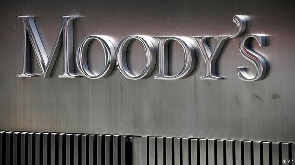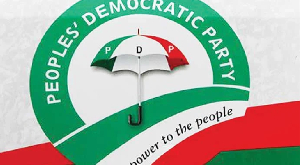Credit rating agency Moody’s Investors Service is projecting a slower economic growth rate of 4.1 percent for Ghana in 2021, 0.9 percentage points lower than the government’s target of 5 percent for the period.
“We expect real GDP growth of 4.1 percent in 2021 as stronger oil prices support increased activity and loosening coronavirus-related restrictions provide additional support to the economic recovery,” said Moody’s in its latest country report.
However, the agency was bullish about the 2020 growth rate, estimating that the economy grew by 1.9 percent for the period, against the government’s projection of 0.9 percent.
The agency assessed Ghana’s fiscal strength as “ca”, below the scorecard-indicated outcome of “caa3”.
“The adjustment mostly reflects weak debt affordability—which is one of the lowest among the countries we rate—with interest-to-revenue at close to 50 percent in 2020,” it said.
“In addition, risks associated with contingent liabilities will continue to weigh on fiscal strength. Our debt projection includes the materialisation of financial and energy-related costs of around 2 percent–3 percent of GDP per year, in addition to the projected fiscal deficit.”
Moody’s estimated that the debt-to-GDP ratio will rise to 76.7 percent in 2021 and increase further over the next three years. However, it added, the extent of the rise would depend on the government’s ability to restore primary surpluses after the coronavirus shock dissipates, and partly on the government’s success in preserving exchange-rate stability.
Additionally, the agency noted that the debt situation would depend on how the government deals with additional contingent liabilities arising in the energy sector as a result of “take-or-pay” contracts with energy producers, which extend until 2023.
“We expect additional (mostly energy-related) annual contingent liabilities of around 2 percent of GDP per year until 2023, which we include in our debt projections. These reflect estimated annual payments of around US$1.5bn related to “take-or-pay” contracts for installed and contracted power plants, unless these can be successfully renegotiated, in addition to outstanding inter-utility debts.”
In 2020, the debt-to-GDP ratio increased to 76.1 percent from 62.8 percent in 2019, largely reflecting a Eurobond issuance in February 2020, a substantial fiscal deficit, the crystallisation of contingent liabilities in the energy and financial sectors, and lower-than-expected GDP growth. Excluding the financial sector bailout, debt-to-GDP stood at 71.5 percent of GDP in 2020, according to the government’s estimates.
Moody’s rated Ghana B3 negative in the latest credit profile analysis. This negative outlook reflects the rising risks that the pandemic poses to Ghana’s funding and debt service.
“Ghana is particularly exposed to such shocks because of its high reliance on external financing, both in local and foreign currency, and very weak debt affordability,” the agency said.
“We would likely change the outlook to stable if we conclude that financing pressures were abating, either through increasing evidence that the government is able to limit the increase in its funding needs or confidence that it will be able to secure sufficient funding at moderate costs.”
Business News of Wednesday, 21 April 2021
Source: business24.com.gh













